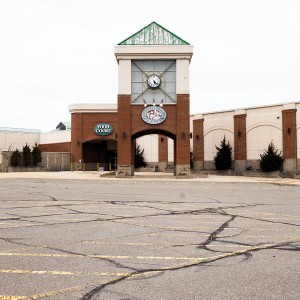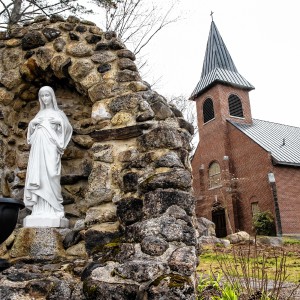Mixed reactions on proposed landfill setback criteria
| Published: 10-19-2023 5:37 PM |
Proposed changes to the state’s environmental protection rules would increase the setbacks for landfills to be located no less than 500 feet from bodies of water, more than double the current 200-foot barrier.
The Department of Environmental Services released the proposed revisions on Wednesday, following several months of public input sessions. However, environmental advocates say the rules lack crucial specifics needed to protect natural resources and residents.
“I felt confident that DES acknowledged publicly in those hearings that a distance is fairly arbitrary,” said State Rep. Nicholas Germana, who is a member of the study committee tasked with examining out-of-state trash issues. “One of the questions I want to ask them is how they determined 500 feet. Why is it 500 and not 800 or 1200?”
Germana said extensive discussions during legislative hearings detailed the importance of establishing setback criteria based on the time it takes for a landfill leak to reach a body of water, not an arbitrary number.
Germana was pleased to see the agency increase its protection efforts, but in several instances, it appears state officials simply went through the rules and increased various distances. For instance, the setback between the landfill’s footprint and the property line was extended from 100 feet to 150 feet.
Others were more pleased.
Adam Finkel, an environmental scientist who has been pushing for the agency to prioritize environmental protection, expressed satisfaction with the recent changes to setback requirements.
Along with the new minimum 500 feet back distance, the rules also say that the landfill shall be located in a way that any leak can be detected and remediated before it contaminates a water body.
Article continues after...
Yesterday's Most Read Articles
 Steeplegate project to reopen to public comment as developer seeks to reduce required parking
Steeplegate project to reopen to public comment as developer seeks to reduce required parking
 A turbulent 50-year history: Inside the rise and fall of a tiny Catholic college in Warner
A turbulent 50-year history: Inside the rise and fall of a tiny Catholic college in Warner
 Students and staff welcome the opening of new Allenstown K-8 school
Students and staff welcome the opening of new Allenstown K-8 school
 High schools: Friday and Saturday results
High schools: Friday and Saturday results
 Hopkinton chocolatier transforms chocolates into works of art
Hopkinton chocolatier transforms chocolates into works of art
 School Board to vote on new Broken Ground principal nominee
School Board to vote on new Broken Ground principal nominee
“I would say they finally heard us and they’re agreeing that it’s important to locate a landfill such that if and when it fails there’s going to be enough time to detect, assess and remediate prior to polluting the water,” explained Finkel “But, how much time is subjective.”
As the state agency proceeds with revisions to the solid waste regulations, the potential impact on the permitting process for the proposed landfill site in Dalton, located near Forest Lake, remains uncertain.
“I do not see how this is a meaningful improvement on current rules with respect to the Dalton site,” said Germana.
Casella Waste Systems and its subsidiary North Country Environmental Services want to build a new landfill next to Forest Lake State Park, potentially threatening the region’s natural resources, tourism, and home values, which has drawn opposition and put a spotlight on how much out-of-state trash New Hampshire is allowing for-profit companies to import and bury here.
The North Country region has a long history of being a dumping ground for solid waste from in and out of state. Environmental advocates in Bethlehem, a small town with about 2,500 residents in the White Mountains region that borders Dalton, has fought the expansion of an existing Casella landfill, which the company acquired in 1994.
In 2021, more than 13,000 tons of waste, including municipal solid waste, construction and demolition debris and contaminated soil from other New England states, were dumped into Betlehem’s landfill.
Comments on the draft rules can be emailed or mailed to the New Hampshire Department of Environmental Services before Nov 7.


 Granite Geek: Free government software for taxes – what could go wrong? (Not much, as it turns out)
Granite Geek: Free government software for taxes – what could go wrong? (Not much, as it turns out) To snuff out cancer, NH firefighters seek regular screenings
To snuff out cancer, NH firefighters seek regular screenings New Hampshire jury finds state liable for abuse at youth detention center and awards victim $38M
New Hampshire jury finds state liable for abuse at youth detention center and awards victim $38M Jurors hear closing arguments in landmark case alleging abuse at New Hampshire youth center
Jurors hear closing arguments in landmark case alleging abuse at New Hampshire youth center
